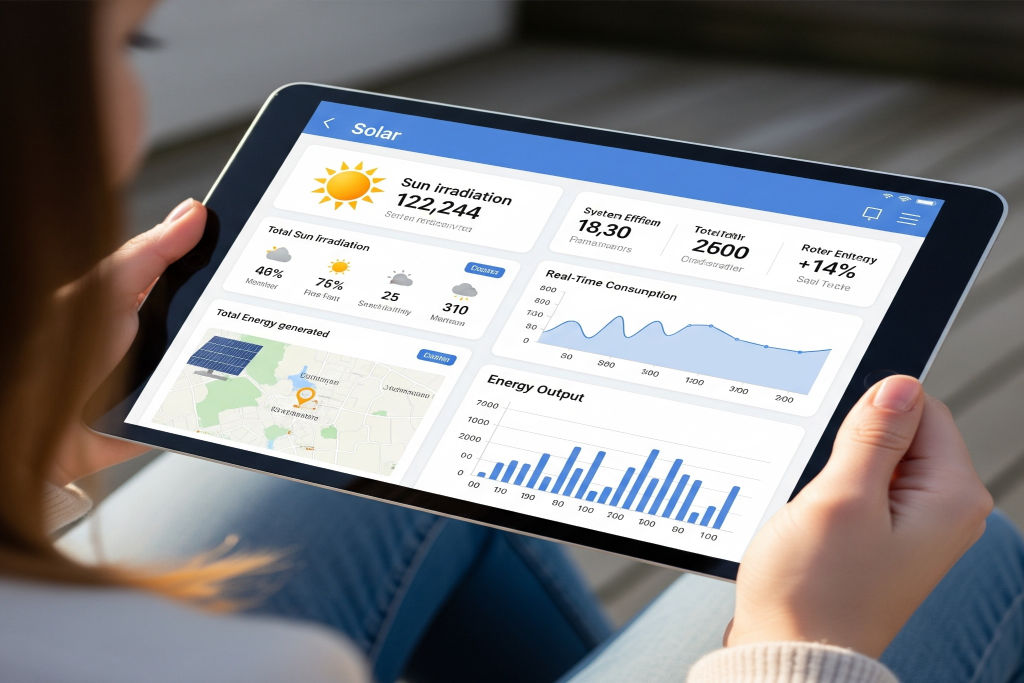Remote Solar Monitoring Trends & Market Growth
The world’s switch to the utilization of renewable energy sources has been toward the implementation of solar power systems. Solar installations are increasing across the world, but proper real-time monitoring systems pose the biggest challenge today. A solar energy monitoring system is instrumental in guaranteeing effective performance, effectiveness, and longevity of solar power installations. By integrating the solar remote monitoring system, users can monitor energy output performance, spot issues, and more accurately optimize energy use.

In the past two years, solar technology has revolutionized how solar power is utilized with an innovation in intelligent solar technology redefining solar power management. IoT-based monitoring systems for solar panels have ensured communication between solar panels, inverters, and power grid networks becomes smooth. Smart systems help ensure real-time analysis, predictive maintenance signals, and auto-controls, thus making solar power management effective and economical.
One of the most advanced technologies in use today is solar tracking technology, which maximizes the performance of solar panels by automatically adjusting panels to capture sufficient sunlight. Integrated with intelligent monitoring technologies, such systems have been key to maximizing energy yield and system efficiency. Solar energy monitoring systems with built-in AI-powered analytics are looking towards a smart and sturdy solar power future.
This blog talks about the latest trends of remote solar monitoring, emerging technologies, and solar monitoring market expansions. From internet of things based solar tracking systems to artificial intelligence-based analytics, we discuss how digitalization is transforming the solar industry.
Why is Remote Solar Monitoring Essential?
Solar remote monitoring systems have become more widely adopted because they can offer real-time feedback regarding solar panel performance. Here’s why they are needed:
- Real-Time Monitoring: Offers real-time information about power generation, usage, and possible inefficiencies.
- Predictive Maintenance: Leverages AI and IoT to identify system failures prior to their amplification, minimizing downtime and maintenance expenses.
- Enhanced Efficiency: Maxes out energy production by changing panels and inverters according to weather and exposure to sunlight.
- Cost Savings: Reduces operational costs through avoidance of energy losses and maximizing performance.
- Grid Integration: Improves energy distribution through integration with smart grids, providing stable and efficient power supply.
Market Growth & Future Trends in Solar Monitoring
The solar energy monitoring system market is witnessing high growth, triggered by increasing adoption of solar power, technological innovation, and government policies promoting renewable energy. The following are a few of the major trends influencing the future:
1. IoT and Cloud-Based Monitoring
With the development in solar energy monitoring via IoT, cloud-based analytics and real-time data gathering are the way to go. These consist of remote availability of performance data, allowing users to remotely make decisions anywhere in the world.
2. Predictive Analytics based on AI
Artificial intelligence is adding to solar remote monitoring systems via predictive analytics increasingly to support fault detection, efficiency maximization, and self-correcting faults.
3. Intelligent Solar Tracking Systems
Technological advancements in solar tracking systems enhance energy harvesting through dynamic orientation adjustments of the panels. These follow sunlight patterns through AI and IoT fine-tuned positions to yield the highest energy output.
4. Blockchain for Energy Trading
Blockchain is emerging as a reliable means of handling solar energy transactions through secure peer-to-peer trading of solar power and decentralized distribution of solar energy.
5. Hybrid Solar Monitoring Solutions
Hybrid systems that integrate solar monitoring with battery storage and smart grids are gaining wider acceptance. They enhance energy management by optimizing the storage and distribution of solar power, making it more efficient.
Conclusion
The evolution of solar energy monitoring systems has revolutionized the world of solar power for good, ensuring energy management is efficient, reliable, and data-based. Integration of solar energy tracking systems, IoT, and AI-based analytics is transforming solar energy monitoring and optimisation. With rising demands for renewable energy globally, solar remote monitoring system innovations will be the pillars of a green future.
Frequently Asked Questions (FAQs)
A solar energy monitoring system is a digital solution that tracks and analyzes solar power generation, consumption, and efficiency. It helps in optimizing performance, detecting faults, and reducing energy losses.
A solar remote monitoring system collects real-time data from solar panels, inverters, and other components. It transmits this data to cloud-based platforms or mobile applications, providing users with insights into their system’s performance.
A solar tracking system increases energy production by adjusting the angle of solar panels to follow the sun’s movement. This enhances sunlight absorption and maximizes efficiency.
The solar energy monitoring system using IoT leverages smart sensors and cloud computing to provide real-time data analytics, predictive maintenance, and remote control functionalities, making solar power management more efficient.
The cost of solar remote monitoring systems varies based on features and scalability. However, these systems reduce long-term operational costs by preventing failures and optimizing energy usage.












